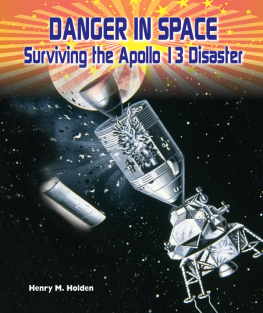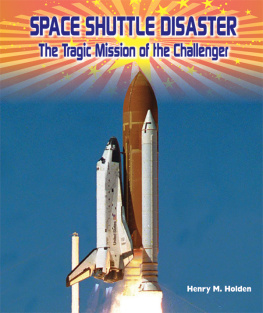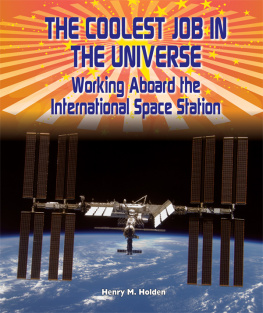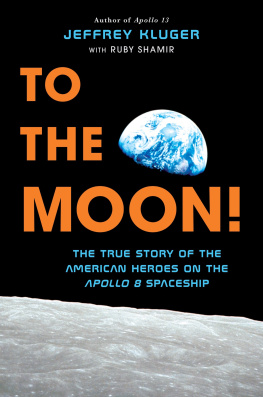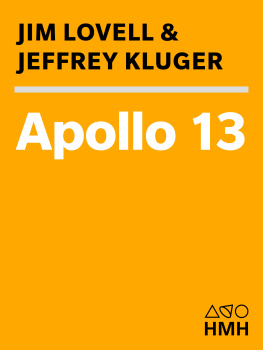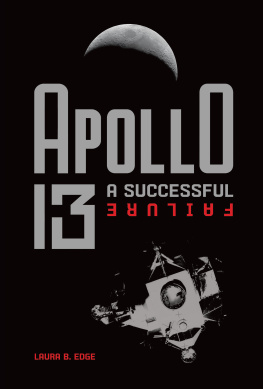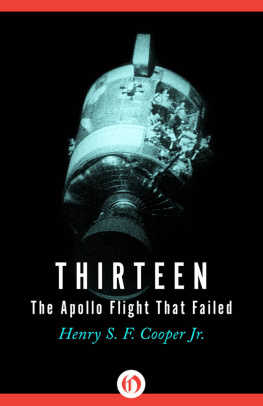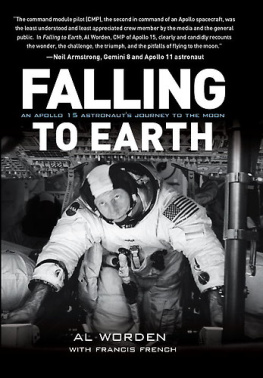"Houston, We've Had a Problem"
Soaring through space at twenty-five thousand miles per hour, Apollo 13 was on course for the Moon. Suddenly, the three astronauts aboard the spacecraft heard a loud bang. A strong vibration rumbled through the crew cabin. There had been an explosion in the oxygen tank! More than two hundred thousand miles from Earth, Apollo 13 was in grave danger. The astronauts had planned to land on the Moon. But now they had a new mission: survival. Author Henry M. Holden delivers the gripping details of how three astronauts, with the help of NASA scientists on Earth, turned a story of disaster into one of triumph.
About the Author
Henry M. Holden, with a background in the telecommunications industry, writes for children and adults. He has published several books for Enslow Publishers, Inc.


Image Credit: NASA
It was April 11, 1970. Astronauts James A. Lovell, Jr., John (Jack) L. Swigert, Jr., and Fred W. Haise, Jr., were rocketing toward the Moon at 25,000 miles (40,225 kilometers) per hour. Apollo 13 was going faster than a bullet! The National Aeronautics and Space Administration (NASA) was sending this spacecraft to Fra Mauro, a range of hills on the Moon. The astronauts were going to collect rock samples so scientists could learn more about the Moon.
Apollo 13 looked like a perfect flight. The people in Mission Control started to relax but remained alert. A few hours later, the boredom would end suddenly. The situation would turn into a life-and-death struggle in outer space.
On April 13, almost fifty-six hours into the mission, the crew began a television broadcast from the command module. Mission Control in Houston played music for the astronauts. It included the song Aquarius and the theme from the movie 2001, A Space Odyssey. The television broadcast ended with Lovell saying, This is the crew of Apollo 13 wishing everybody there a nice evening....
A few minutes later, a system light indicated low pressure in one of the fuel tanks. Houston asked the astronauts to do a cryogenic stir. They would stir the super-cold oxygen and hydrogen with remote fans. This would raise the pressure. About sixteen seconds later, the crew heard a loud bang. Swigert, strapped in his seat, felt a strong vibration. Lovell, floating in the command module, felt the noise rumble through him. Haise, who was in the tunnel between the command module and the lunar module, saw the walls move around him. Haise had not opened a valve. What happened was not something their training had covered. This was Lovells fourth trip into space, but this was something he had not experienced before.
Swigert calmly reported, Okay, Houston, weve had a problem here. He reported they had a main B bus undervolt. This meant they were losing power in one of the three fuel cells.
An alarm was sounding in the astronauts headsets. Other warning lights lit up the panel, showing that two of the three fuel cells were dead. These were the spacecrafts primary source of electricity. The warning lights also showed one oxygen tank was completely empty. There were signs that the other tank was losing oxygen rapidly. Something had gone terribly wrong on Apollo 13.

Image Credit: NASA Headquarters
A view of Mission Control Center in Houston, Texas, on April 13, 1970, during the video transmission from Apollo 13. The television screen at the top of the image shows astronaut Fred W. Haise, Jr. Moments after the live broadcast ended, an explosion occurred on the spacecraft.

Image Credit: NASA
This is an artists rendering of the lunar module from Apollo 13 descending toward the Moons surface. Unfortunately, the Apollo 13 astronauts never did get to land on the Moon. After the explosion in the oxygen tank, their only goal was to return to Earth safely.
Houston figured out that there had been an explosion in the service module (SM) attached to the capsule. Thirteen minutes after the explosion, Lovell looked out the left-hand window. What he saw made him realize they were facing a potential disaster. We are venting something out into theinto space, said Lovell, it looks like a gas.
Apollo 13 was more than 200,000 miles (321,800 kilometers) from Earth and about 45,000 miles (72,405 kilometers) from the gray, pockmarked surface of the Moon. It was just entering the Moons gravitational pull. The spacecraft did not have enough power to turn back, and an emergency landing on the Moon was out of the question. One science reporter predicted the crew had about a 10 percent chance of making it home alive. The world held its breath, while the engineers in Houston worked to save the lives of the three astronauts.

Image Credit: NASA
The Saturn V rocket ignites, lifting Apollo 13 off the launchpad at Cape Canaveral, Florida, on April 11, 1970. This was NASAs third mission to attempt a moon landing.
Apollo 13 was the third mission to attempt to land on the Moon. As always, great care was taken in preparing for the space mission. The astronauts trained for months and planned for every possible emergency. At the end of their training, they felt they were ready for almost anything. Teams of thousands on the ground would be backing them up. Mission Control is always aware that once a rocket is launched, there is little anyone on the ground can do if things should happen to go wrong.
The Saturn V rocket lifted the command-service module, Odyssey, off the launchpad at Cape Canaveral. The command module contains the crew compartment, controls, many of the spacecrafts systems, and the heat shield. The service module, attached to the command module, contains the propulsion system and the oxygen and hydrogen fuel. Inside the rocket is the lunar module Aquarius. The lunar module is the only part of the spacecraft that lands on the Moon.
The five engines of the second stage of the rocket ignited and burned smoothly for about five minutes. The crew felt a strong vibration, and then the center engine unexpectedly shut down two minutes early. The engineers in Houston fired the remaining four engines thirty-four seconds longer than planned. This would make up for the lost thrust. The third stage would burn for nine extra seconds to put them in Earth orbit. We heaved sighs of relief, thinking we had gotten through what probably would be the one major glitch in the mission, said Eugene Kranz, the missions chief flight director. There was no hint of the great danger ahead.
Two hours later, the rockets third stage fired again. Odyssey broke out of Earth orbit and was on a course to the Moon. It would take about three days to reach the Moon. About an hour later, Jack Swigert, the command module pilot, separated the command module from the third stage of the rocket. Swigert turned Odyssey around and docked with Aquarius. Then, easing the lunar module from the rocket, the two vehicles headed for the Moon.

